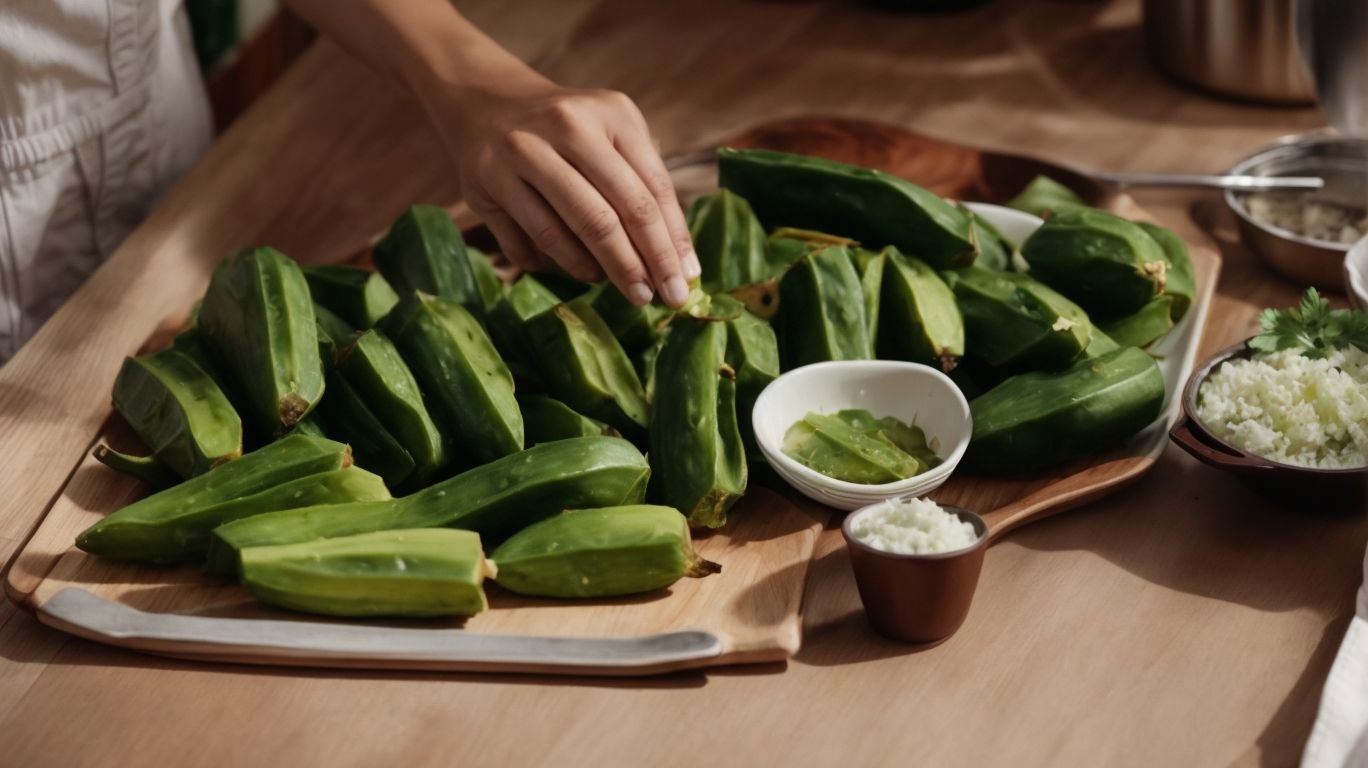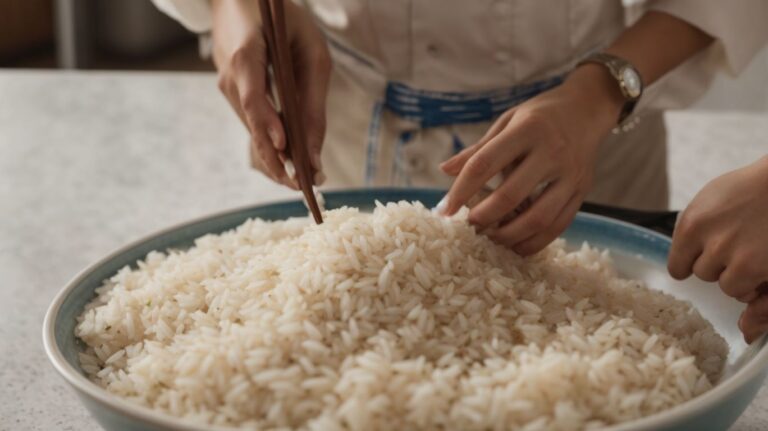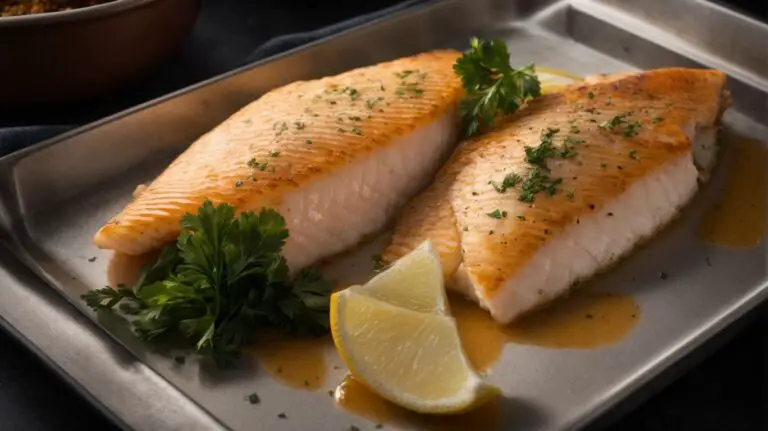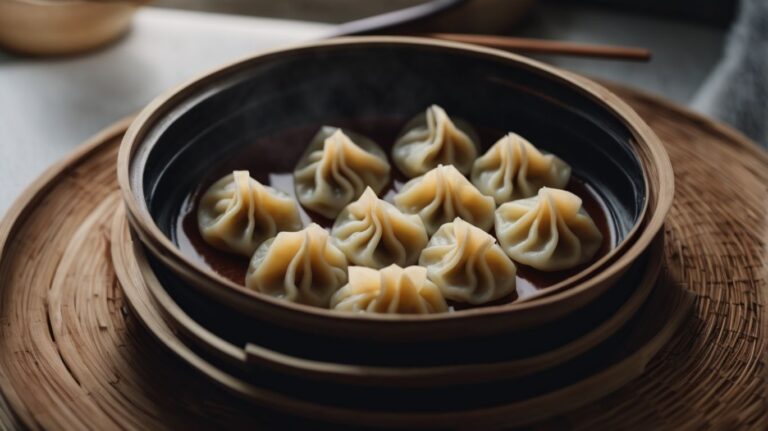How to Cook Nopales?
Have you ever tried nopales? These prickly pear cactus pads are not only delicious but also packed with nutritional benefits.
In this article, we’ll explore what nopales are, their nutritional value, where to buy them, and how to prepare them for cooking.
From cleaning and cutting to cooking techniques like grilling, boiling, sauteing, and roasting, we’ll cover it all.
Stay tuned for some mouth-watering recipes and tips on storing, reheating, and incorporating nopales into your dishes!
Key Takeaways:
About Nopales
Nopales, a staple in Mexican cuisine, are the edible pads of the prickly pear cactus.
These versatile cactus pads are known for their unique flavor profile that balances a slightly tangy and earthy taste, making them a popular addition to various dishes.
- They are commonly used in Mexican recipes such as nopalitos con huevos (nopales with eggs)
- nopales en salsa verde (nopales in green sauce)
- and nopales al vapor (steamed nopales).
Internationally, nopales are gaining popularity for their health benefits as they are low in calories and high in fiber, antioxidants, and vitamins.
What Are Nopales?
Nopales, also known as cactus paddles, are widely used in Mexican cuisine due to their versatile nature and unique flavor profile.
These paddle-shaped succulents are a staple in traditional Mexican recipes, offering a refreshing touch to dishes with their slightly tart and citrusy taste. Rich in vitamins A, C, and K, nopales are not only delicious but also packed with nutrients that support a healthy diet.
In terms of preparing nopales, it’s crucial to remove the spines carefully before slicing them into strips or cubes for cooking. They can be boiled, grilled, or sautéed to create a variety of mouthwatering dishes, such as nopales salad, tacos, or scrambled eggs with nopales.
What Are the Nutritional Benefits of Nopales?
Nopales offer a plethora of nutritional benefits, including antioxidants, vitamins, and minerals that support the immune system and regulate blood sugar levels and cholesterol.
These cactus pads are particularly low in calories and high in fiber, making them an excellent addition to a balanced diet, especially for those following a keto-friendly eating plan. The high fiber content of nopales aids in digestion and helps in maintaining a healthy weight by promoting a feeling of fullness. Their antioxidant properties can protect cells from damage and reduce inflammation, potentially lowering the risk of chronic diseases.
Where Can You Buy Nopales?
Nopales can be purchased at local grocery stores like HEB in the southwestern United States, as well as in Mexican markets and international grocery stores.
These stores typically stock nopales due to their popularity in regions with a significant Hispanic population. Nopales are often in high demand for their versatility in cooking, especially among those following Whole30 or gluten-free diets.
In regions like Texas, Arizona, and California, you can find fresh nopales at well-known grocery chains like Walmart, Kroger, and Albertsons. Farmers’ markets in these areas also offer fresh nopales for purchase, usually alongside other fresh produce.
Preparing Nopales for Cooking
Cleaning and prepping nopales involves removing spines and thorns, rinsing them thoroughly, and optionally sautéing with garlic, onions, and olive oil.
After rinsing the nopales, it’s crucial to make sure all spines are completely removed to avoid any unwanted prickles while cooking. This can be achieved by gently scraping the surface with a sharp knife or a vegetable peeler.
Once the nopales are spine-free, you can proceed to slice them into your desired shape, whether it’s strips, cubes, or rounds. This step allows for consistent cooking and enhances the overall presentation of the dish.
To infuse additional flavor, consider marinating the nopales in a mixture of spices such as cumin, paprika, and a hint of lime juice before sautéing them. This simple technique can elevate the taste profile of the dish and make it more appealing to your taste buds.
How to Clean Nopales?
Cleaning nopales involves carefully removing the spines and thorns using a knife or vegetable peeler and then rinsing them under cold water.
Once you have successfully removed the spines, it is crucial to rinse the nopales thoroughly to get rid of any leftover debris. Boiling water can be used in this step to ensure that the nopales are completely clean and free of impurities. Make sure to let them soak for a few minutes before draining the water.
After boiling, transfer the nopales to a strainer and rinse them under running water to wash away any remaining residue. This extra step of washing with clean water helps to enhance the flavor and texture of the nopales.
How to Cut Nopales?
Nopales can be either diced into small pieces or sliced lengthwise, depending on the recipe and desired texture.
For dishes where you want the nopales to blend in and mix with other ingredients, dicing them into small pieces works well. This method allows the bright green flesh to be evenly distributed throughout the dish, adding both flavor and texture.
On the other hand, slicing the nopales lengthwise into thin strips or keeping them in paddle length segments is ideal for dishes where you want them to stand out visually, like in salads or stir-fries. The long slices showcase the unique shape of nopales, making them a visually appealing addition to any plate.
How to Remove the Thorns from Nopales?
To remove thorns from nopales, carefully peel the edges with a knife or vegetable peeler, ensuring to also eliminate any residual slime.
Once the thorns have been cleared, the nopales are ready for further preparation. Next, okra can be used to ensure all slime is removed. Slice the okra in half and rub the cut side on the surface of the nopales where the slime remains. The natural mucilage in okra helps to bind the slime, making it easier to wipe away.
After applying the okra and letting it sit for a few minutes, gently wipe the nopales with a damp cloth or paper towel. This method not only sanitizes the nopales but also aids in enhancing their texture and flavor.
How to Cook Nopales?
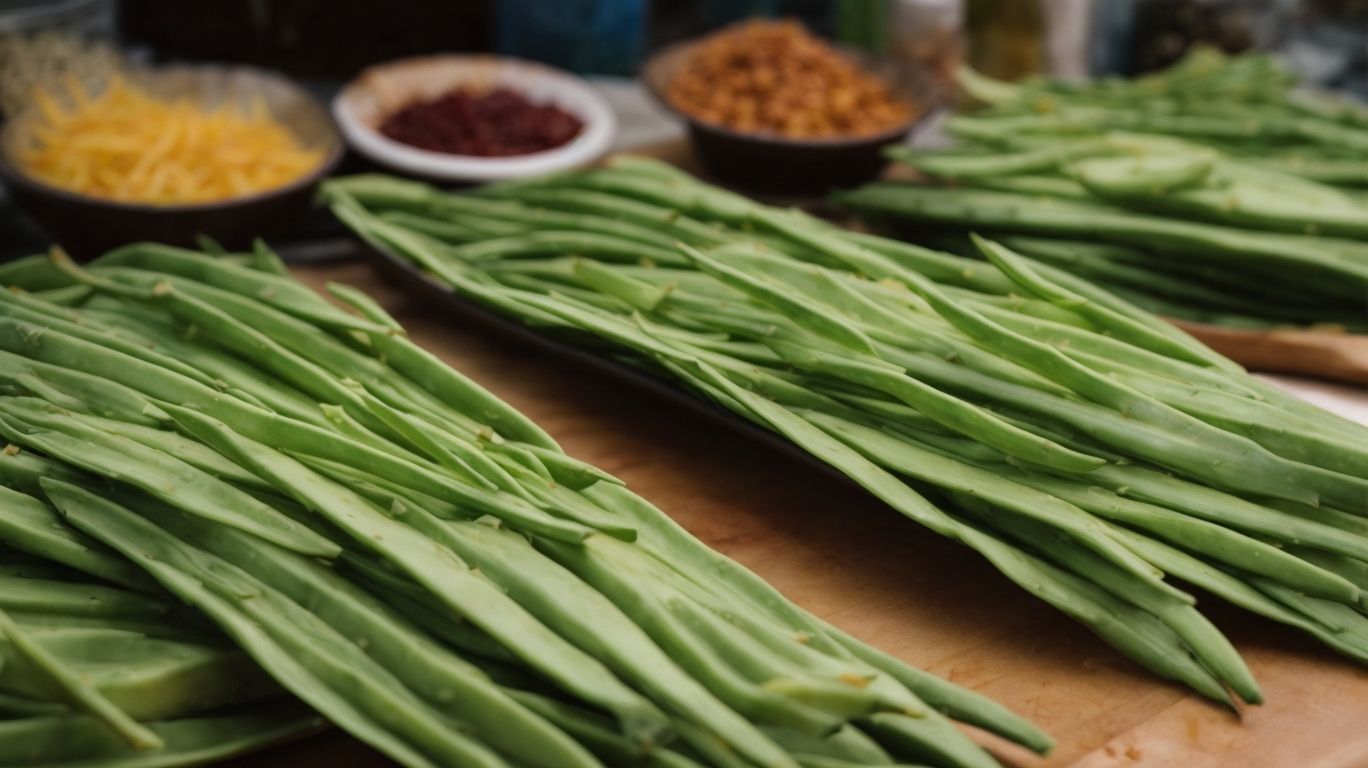
Credits: Poormet.Com – Zachary Miller
Cooking nopales involves various methods such as grilling, boiling, sautéing, and roasting, each bringing out a unique flavor profile and texture.
Grilling nopales is a popular method that imparts a smoky essence to the dish. Start by brushing the cactus pads with olive oil and sprinkling them with a blend of spices like cumin, paprika, and garlic powder. Place them on a preheated grill and cook for a few minutes per side until tender.
Boiling nopales involves simmering them in water with a pinch of salt until they soften, retaining their natural freshness.
Sautéing nopales in a skillet with onions, garlic, and bell peppers creates a savory dish with a slightly caramelized finish. Roasting nopales in the oven brings out their sweetness, especially when drizzled with a hint of honey and a sprinkle of fresh cilantro.
Grilling Nopales
Grilling nopales on a hot comal or grill enhances their flavor and texture, offering a smoky charred profile that pairs well with dishes like squash flowers.
When grilling nopales, make sure to clean them thoroughly by removing the thorns and washing them with water. Preheat your comal or grill to medium-high heat. Place the nopales on the grill and cook for about 3-4 minutes on each side until they develop grill marks. You can also drizzle a bit of olive oil on them to prevent sticking and add extra flavor. Once they are cooked, you can slice the grilled nopales and use them in various dishes. They are great for making roasted vegetable salads or adding to quesadillas for a delicious and nutritious twist.
Boiling Nopales
Boiling nopales in salted water helps remove their gelatinous liquid and bitterness, making them tender and ready for various serving suggestions.
After boiling the nopales until they are tender, drain them and rinse under cold water to stop the cooking process. This step helps retain their vibrant green color and crisp texture. Once cooled, chop the nopales into bite-sized pieces, ready to be a delicious addition to dishes like vegetarian tacos or a refreshing salad. To elevate their flavor, consider marinating the nopales in a zesty chimichurri sauce for a delightful tanginess. Whether using them as a side dish, topping, or main ingredient, boiled nopales offer a versatile and healthy culinary option.
Sauteing Nopales
Sautéing nopales with garlic, onions, olive oil, and spices yields a flavorful dish that can be enjoyed on its own or as a side.
When cooking nopales, start by cleaning and removing the spines. Then, slice them into strips or dice them, depending on your preference. Heat olive oil in a pan over medium heat, add minced garlic and diced onions until fragrant. Next, add the nopales and sauté until they become tender but still slightly crisp. For seasoning, you can use traditional Mexican flavors like cumin, chili powder, and a squeeze of lime for a zesty kick.
Roasting Nopales
Roasting nopales imparts a smoky flavor and vibrant bright green color, elevating their visual appeal and savory profile.
During the roasting process, the heat caramelizes the natural sugars in the nopales, creating a delightful balance of sweetness and earthiness. The outer edges crisp up, offering a satisfying crunch that contrasts with the tender interior. This dual texture makes nopales an excellent meat substitute in dishes, providing a hearty bite akin to grilled chicken or steak. Roasting nopales enhances their keto-friendly properties by intensifying their umami undertones and reducing their natural sliminess, making them a versatile ingredient in low-carb cooking.
Recipes Using Nopales
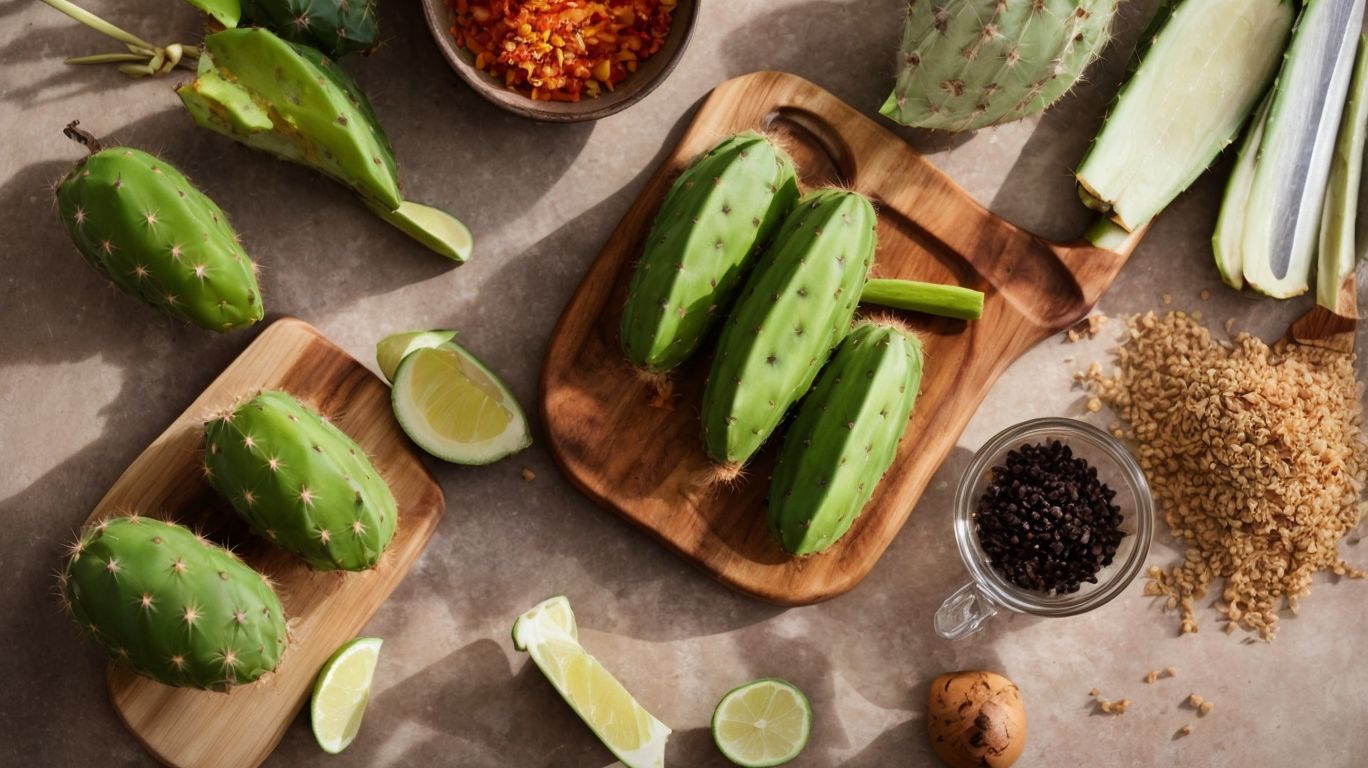
Credits: Poormet.Com – Robert Anderson
Explore a variety of delicious recipes using nopales, from vibrant salads and hearty tacos to creative dishes featuring asparagus and okra.
Nopales, also known as cactus paddles, are a versatile ingredient that can be utilized in both traditional Mexican cuisine and modern fusion dishes. Their unique texture and mild flavor make them a great addition to salads, soups, and stir-fries. Nopales are low in cholesterol and calories, making them a healthy choice for those looking to maintain a balanced diet. With their high fiber content, nopales are also popular in vegetarian recipes as they provide a meaty texture without the need for animal products. Whether grilled, sautéed, or pickled, nopales add a delightful crunch and freshness to any dish.
Nopales Salad
A refreshing nopales salad showcases the cactus paddles’ bright green color and pairs well with zesty dressings and fresh ingredients.
To prepare this delightful dish, start by gathering fresh nopales cactus paddles and cleaning them thoroughly to remove any thorns. Boil the nopales until tender, then dice them into bite-sized pieces to enhance the salad’s texture. Combine the nopales with colorful cherry tomatoes, crisp cucumbers, and creamy avocado chunks for a visually appealing ensemble. For a dairy-free and vegan-friendly option, consider adding tangy vinaigrettes made with citrus juices, olive oil, and fresh herbs. Serve this vibrant salad as a side dish to complement grilled meats or enjoy it as a light meal with some crusty bread for a complete and wholesome dining experience.
Nopales Tacos
Nopales tacos filled with diced cactus paddles, onions, and spices offer a flavorful and vegetarian-friendly twist on traditional taco recipes.
Besides being delicious, incorporating nopales in your diet can provide numerous health benefits. Rich in antioxidants, nopales can help support a healthy immune system and are known to potentially assist in regulating blood sugar levels. When preparing the filling, consider adding bell peppers and garlic for an extra burst of flavor. For seasoning, a combination of cumin, paprika, and a hint of lime juice can elevate the taste profile of these tacos.
Nopales Smoothie
Blend nopales into a nutritious smoothie for a vitamin and mineral boost, adding a unique twist to your daily smoothie routine.
Nopales, also known as prickly pear cactus paddles, are packed with essential nutrients such as vitamin C, vitamin K, and magnesium, making them a powerhouse ingredient for your smoothie. Their subtle, slightly tangy flavor can complement a variety of fruits and vegetables.
To create a refreshing paleo-friendly smoothie, pair nopales with antioxidant-rich berries like blueberries or strawberries.
The mucilaginous texture of nopales adds a creamy consistency to the smoothie, enhancing its overall mouthfeel. Incorporating nopales into your smoothie not only boosts its nutritional value but also contributes to its unique flavor profile. Try experimenting with different combinations to find your favorite paleo nopales smoothie recipe!
Nopales Omelette
Create a flavorful nopales omelette by sautéing cactus paddles with onions, garlic, and spices, resulting in a hearty and satisfying breakfast option.
Once the nopales are cleaned and sliced, carefully sauté them with finely chopped onions until they turn translucent, adding a hint of minced garlic for a fragrant touch. Season generously with your favorite spices such as cumin, paprika, and a pinch of black pepper for a burst of flavors. The contrast of the earthy nopales with the sweetness of the onions and the warmth of the spices creates a harmonious blend.
Once the omelette is cooked to perfection, you can enhance its appeal by topping it with fresh salsa, creamy avocado slices, or a dollop of dairy-free cashew cream. For a complete meal, pair the nopales omelette with a side of fresh greens or a slice of gluten-free toast, making it a wholesome and Whole30-friendly breakfast option that satisfies both the taste buds and nutritional needs.
Tips and Tricks for Cooking with Nopales
Master the art of cooking with nopales by learning storage techniques, reheating methods, and innovative ways to incorporate them into various dishes.
When handling nopales, it’s important to remember that they are a great source of antioxidants and are naturally cholesterol-free, making them a healthy addition to your meals. To store nopales, wrap them in a damp paper towel and place them in a plastic bag in the refrigerator. When reheating, consider grilling or sautéing them to maintain their texture and flavor. For creative dish ideas, try adding nopales to salads, tacos, omelets, or even blending them into smoothies for a nutritious boost.
How to Store Nopales?
Store fresh nopales in a breathable container in the refrigerator to maintain their flexibility and bright color for optimal freshness.
When storing nopales, it is crucial to avoid tightly sealed containers as they can trap moisture, leading to a loss of crispness. Opt for a perforated plastic bag or a storage container with ventilation holes to allow air circulation around the nopales. This simple step can help extend the shelf life of the nopales by preventing excess moisture buildup.
How to Reheat Nopales?
When reheating nopales, be cautious not to overcook them, as this can cause them to become limp and lose their bright color and natural crunch.
To avoid overcooking, it is recommended to reheat nopales using gentle methods such as sautéing or grilling for just a few minutes until they are warmed through. Microwaving them for short intervals with a sprinkle of water can help retain their texture and flavor.
Overcooking nopales not only affects their texture but can also result in a significant loss of nutrients. Nopales are rich in antioxidants, fiber, and vitamins, all of which play a crucial role in supporting a healthy immune system and meeting your dietary needs.
How to Incorporate Nopales into Other Dishes?
Experiment with incorporating nopales into different dishes and recipes, from quesadillas to stir-fries, and consider unique pairings like squash flowers for added depth of flavor.
Adding nopales to your culinary repertoire not only introduces a unique texture but also a host of health benefits. These cactus pads are rich in vitamins A, C, and K, as well as essential minerals like potassium and magnesium.
For a refreshing twist, try incorporating them into a citrusy salad alongside grilled shrimp. Their mild, slightly tart flavor pairs wonderfully with the tanginess of a lemon vinaigrette.
Frequently Asked Questions
What are Nopales and how do you cook them?
Nopales are the thick, flat pads of the prickly pear cactus that are commonly used in Mexican cuisine. To cook them, you can grill, sauté, or boil them until tender.
What is the best way to remove the spines from Nopales?
The best way to remove the spines from Nopales is to first use tongs to hold the pad and then use a sharp knife to carefully scrape off the spines. Alternatively, you can also use a vegetable peeler to remove the spines.
How long does it take to cook Nopales?
The cooking time for Nopales will vary depending on the method you choose. Grilling or sautéing Nopales usually takes about 5-7 minutes, while boiling them can take up to 15-20 minutes.
Can I eat Nopales raw?
Yes, you can eat Nopales raw, but they are more commonly cooked before eating. Raw Nopales have a slightly slimy texture and a tart taste, which some people may find unappealing.
What are some popular ways to use Nopales in cooking?
Nopales can be used in a variety of dishes, such as salads, tacos, soups, and even smoothies. They are also a great addition to scrambled eggs or as a side dish for grilled meats.
Do Nopales have any health benefits?
Yes, Nopales are a good source of fiber, antioxidants, and important nutrients like vitamins A, C, and K. They have also been linked to potential health benefits such as improving digestion and aiding in controlling blood sugar levels.

